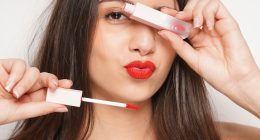Showering should be an enjoyable, luxurious experience that rejuvenates your skin and hair. But, when mineral deposits build up, they can create low water pressure and clog nozzles.
Clean your filter and showerhead regularly to prevent clogging. This simple maintenance routine will also help reduce the amount of minerals and chemicals in your shower.
Clean It Regularly
Keeping your shower head clean is one of the most important steps in maintaining its performance and health. This is especially true in areas with hard water, as mineral deposits can quickly accumulate and block nozzle openings. A clean filter shower head can ensure that you’re getting the most out of your investment by removing unhealthy contaminants, while also protecting your skin from harsh chemicals.
Unfortunately, many homeowners overlook this critical task. If you’re noticing a reduction in your showerhead’s water flow or a visible buildup of grime, it’s time to clean it. While the process is relatively easy, it’s best to do so on a regular basis, as this can prevent more serious damage down the line.
A clogged showerhead can lead to reduced water pressure, sputtering water, and even a complete failure of the device. If you notice a sudden drop in your water pressure or the formation of thick, crusty deposits on your showerhead, it’s likely due to an accumulation of minerals, which can block nozzle openings and restrict water flow.
To keep your filter shower head free from these deposits, it’s important to clean it regularly using a non-toxic solution. While your first instinct may be to reach for the bleach, this is not recommended as harsh chemical cleaners can damage your showerhead and pose a safety hazard. Instead, you can use a homemade solution utilizing lemon juice, which is a natural chelating agent and effective at dissolving mineral buildup.
Start by identifying the area of your showerhead that’s affected by mineral buildup. Next, prepare your cleaning solution. Fill a gallon-size storage bag or shallow bucket with equal parts of water and white vinegar. Carefully place your showerhead inside the bag, making sure that all of the nozzles are submerged in the solution. Secure the bag with a rubber band, tape, or twist tie to ensure that it stays in place while the showerhead is soaking. Allow the device to sit in the solution for an hour or two. After the showerhead has soaked, remove it from the bag and run hot water through the nozzles to flush out any remaining debris.
Replace the Filter Screen
If you’ve been using a filter shower head for some time, it may be time to replace the filter screen. It’s the first line of defense, trapping larger debris and silt before it can get into the filtration system. Cleaning the filter screen regularly will help to extend its life and keep your showering experience safe and clean.
Even with a good quality shower head, mineral deposits can build up and clog the openings of the nozzles (the part that actually sprays water). These blocked openings are an ideal place for bacteria to grow, especially if you have hard water or well water. A shower head filter can eliminate these minerals and chemicals, helping to maintain healthy skin and hair, but it needs to be cleaned correctly to work at its best.
A filter shower head also helps to prevent chlorine from entering your hair and skin, which can cause dryness and itching. It’s also a great way to reduce allergens that can lead to rashes and itchy skin. But just like your sink, toilet, and tub, a filter shower head can become a hub of germs and bacteria without regular cleaning.
When you’re ready to replace your filter shower head’s filter screen, it’s important to follow the manufacturer’s guidelines for the specific model you own. They will often include instructions on how to remove the shower head from the pipe and how to replace the filter screen.
To make sure you’re not removing the shower head from the pipe too quickly, it’s a good idea to place a rag over the part that connects it to the pipe and use a wrench or pair of pliers to unscrew it. Once you’ve removed the shower head, you can easily clean the filter screen and nozzles by scrubbing them with a toothbrush and soaking them in a solution of equal parts vinegar and water.
Once you’ve replaced the filter screen, reassemble the showerhead and rinse any remaining vinegar solution from the inside of the nozzles with running water. Then, scrub the nozzles with an old toothbrush and use a sewing needle to clear any blocked holes.
Clean the Nozzles

Your shower head is an ideal place for bacteria and other contaminants to live, if not properly cleaned. When mineral deposits and soap scum accumulate, they block the nozzle openings that water comes through, decreasing your shower’s flow and quality, and providing a happy home for bacteria. Fortunately, cleaning your filter shower head is quick and simple, with just a few steps.
First, make sure the shower head is removed from its pipe, and clean it with hot water over your kitchen sink—you don’t want to use any chemicals as they could damage the filter screen or cause other problems. Next, if your model has a separate filter screen inside the fixture, clean that with a scrub brush—you may need to consult the instruction manual or look up your specific model online to learn how to disassemble and clean it.
If your shower head has flexible rubber nozzles, massage each one with your finger to remove any hardened mineral buildup, or use a toothbrush to scour them. If you find some that are clogged, run hot water through the head for a minute to flush out any residue and get them working again.
Soak the shower head—both detachable heads and non-detachable ones will benefit from being soaked—in a solution of equal parts vinegar and water, suggests Melissa Poepping at The Chemical Free Home. She recommends using cleaning-grade vinegar, but you can also use lemon juice or commercial descaler. After the head is soaked, scrub it with a toothbrush, rinse, and reassemble it.
If the nozzles on your showerhead still aren’t functioning as well as they should be, try a second vinegar soak. This time, let the shower head sit for an hour or so before attempting to scrub it again. If that doesn’t work, the problem is most likely in the nozzle openings themselves. You can usually clear these by hand, but if not, you may need to replace your showerhead.
Check for Leaks
Many people don’t consider their showerhead when they clean the bathroom, but a dirty one is not only disgusting to use, it also provides an environment where bacteria and germs can thrive. This is why it’s important to include cleaning your filtered shower head in your regular bathroom maintenance routine.
A clogged showerhead that doesn’t get cleaned can affect your water pressure and may even lead to costly plumbing problems in the future. It can also allow chemicals and particles to pass through unimpeded, meaning that you’re essentially not getting the benefits of your water filter.
If you’re looking to save money and protect your health, it’s worth it to add a filtered showerhead to your home. You might want to consider upgrading to an Afina showerhead for a refreshing and healthier shower experience. Not only will it cut down on the amount of soap, shampoo and conditioner you need to buy, but it will also help prevent drying, irritating mineral deposits from forming on your hair and skin.
These deposits can cause dryness, itchiness and even dandruff, especially in areas with hard water like New York City or on wells in rural locations. Although filtered shower heads aren’t the only solution for these issues, they can significantly reduce the concentration of calcium and magnesium in your water.
If your filtered showerhead isn’t delivering on its promises, it could be time to replace the filters. The average filtration system lasts about 10,000 gallons, or six months, but this depends on your usage habits and the quality of your water supply. If your filtered showerhead doesn’t tell you when to change the filters, check the manufacturer’s website for recommendations or contact their customer service.
When you’re ready to change your showerhead filter, shut off the water main and put on a pair of rubber gloves. You’ll need to unscrew the showerhead with a wrench, but you should first remove the showerhead screen and soak it in vinegar for 30 minutes or an hour. After cleaning, remove the filter, screw the showerhead back on and test your spray to ensure that no leaks are present.









